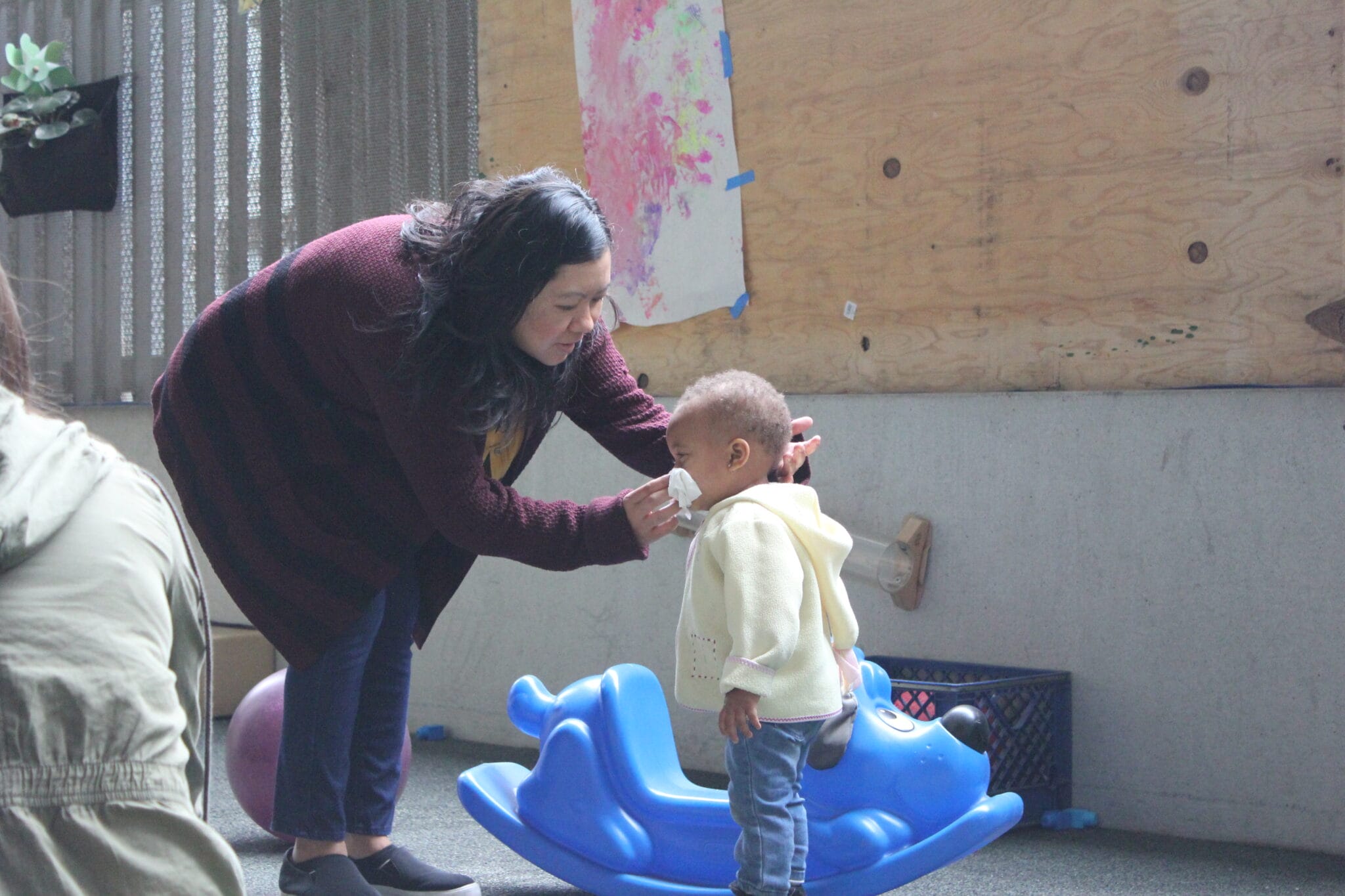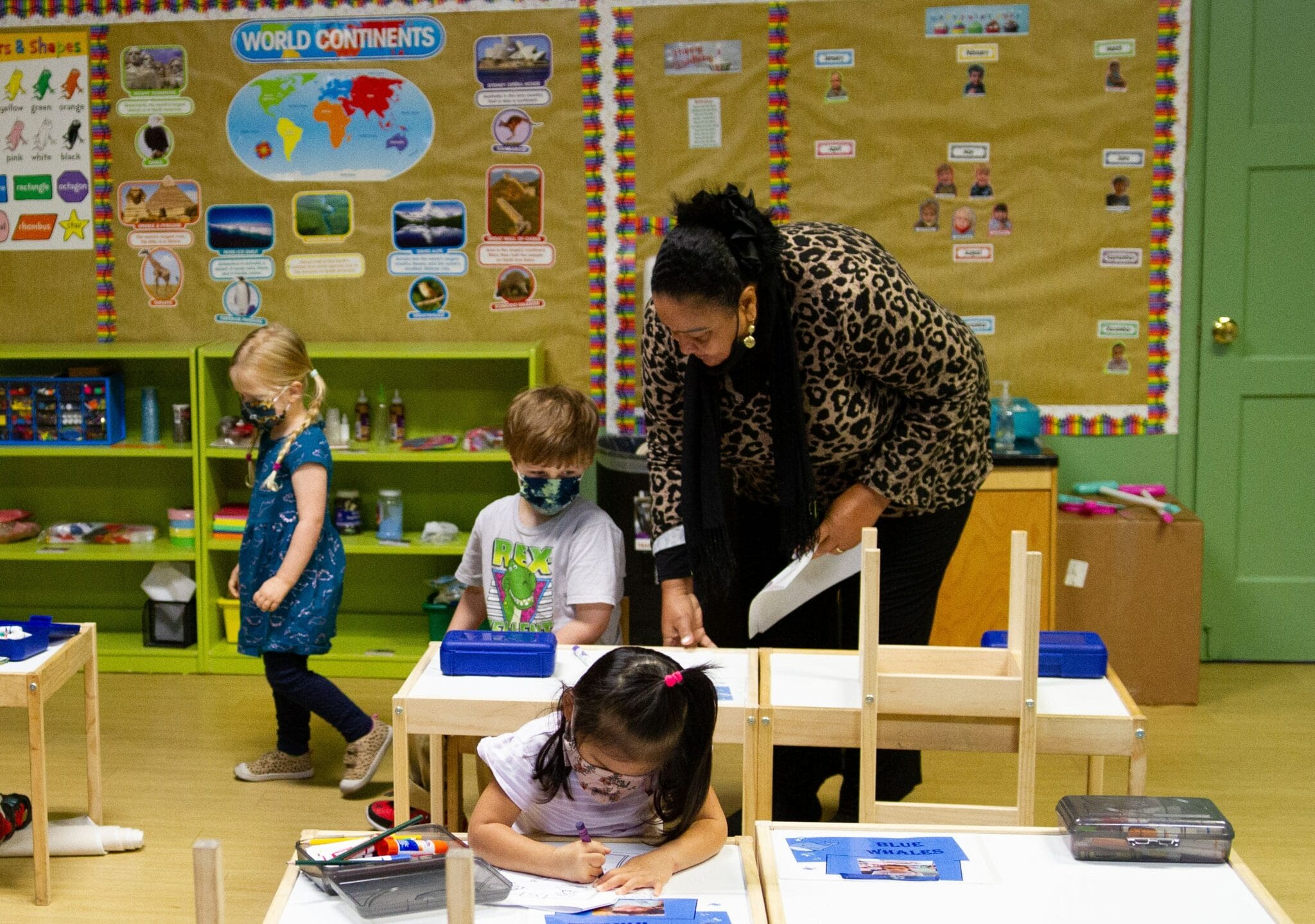The COVID-19 crisis has revealed how much our nation relies on early care and education services in order for other workforces to function, yet chronic disregard for early educators’ well-being has essentially rendered their needs invisible.
Most child care professionals are women, and in some communities, they are mostly women of color. Many of them are terrified of getting COVID-19 and dying, they are terrified of the risk to their own families and those in their care, and they are terrified of losing their livelihoods. They have every right to be frightened.
As almost all K-12 schools across the nation are shuttered — along with parks, playgrounds, and other community recreation areas — child care programs in most states remain open. Early educators across the country report stress, confusion, and dismay about policies related to program closures, resources, and emergency care. “We’ve been an afterthought through this whole crisis,” said Kyra Swenson, a preschool teacher in Wisconsin. “Our governor proclaimed he was closing schools because we need to protect educators and children and their families.” When child care was told to stay open, she said, “We’re sitting here thinking, ‘What do you think we are, and what do you think we do?’”
By failing to provide realistic guidance and resources to safely offer emergency care and by failing to ensure that early educators’ salaries and benefits (including health coverage) will be maintained if programs are closed, we put early educators at risk — as well as the families and communities that they serve. To retain and then shore up our early care and education infrastructure, Congress must act, and act now, to ensure the safety and well-being of early educators, children, and their communities and to stabilize the sector so that it survives this crisis and is available to support the workforce at large when this emergency is declared over.
As congressional representatives and policy leaders call for a relief fund of at least $50 billion for early care and education, we have identified a set of recommendations, intended to be undertaken together, that help protect the lives of early educators and their communities and prioritize getting financial relief directly to child care programs and staff. Linked below, we have made available a series of resources to help stakeholders understand the severity of this crisis.
Recommendation 1
All group child care should be suspended, as has only been done thus far in Rhode Island. We are risking community spread by allowing child care programs to remain open. While children statistically have the least risk of severe illness from COVID-19, babies and young children don’t do social distancing, and they can be carriers without exhibiting any symptoms. The latest CDC supplemental guidance for child care programs is not grounded in the daily realities of child care and provides a false sense of security.
Recommendation 2
Institute a child care relief program to ensure operating expenses, including staff wages and benefits, rent, utilities, and insurance are maintained during the closure. This approach will allow programs to reopen with relative ease and be ready to support other workers when we emerge from this crisis. In the absence of a national program that supports businesses across sectors to close and retain workers, a targeted relief fund is necessary to stabilize the sector and protect its workforce by covering costs of the regular tuition or co-pays that would be paid by families were it not for the crisis. The continuation of wages also helps workers meet their family and household obligations without disruption, a critical need for early educators who are among the lowest-paid workers throughout the country, earning a median wage of $10.72 an hour.
- Funds should be provided to states in order for them to process and distribute payments directly to programs via an existing state office that administers child care subsidy or education programs.
- Programs that participate agree to continue wages and any benefits at the same level they were paying as of March 1,2020, or the date of relief implementation, whichever amount is higher.
- Before this crisis, early educators were more likely to live in poverty than other workers and to report worry about covering basic expenses, like food for their families. Those working with infants and toddlers, who are more likely to be African American women, experience the lowest wages in this severely underpaid sector. These low wages are seldom accompanied by paid sick or family leave, and many early educators report foregoing necessary medical treatment for themselves and family members due to cost. In light of these conditions, we further recommend that the child care relief program include a $600 weekly augmentation to current salaries, similar to the compensation boost provided to workers accessing the federal unemployment insurance provided in the CARES Act.
Recommendation 3
Establish an emergency child care fund for the provision of in-home child care services for the children of essential workers. One healthy caregiver who consistently provides services in a family’s home is likely a safer way to address the critical child care needs of essential workers in health care and other industries, especially as the spread peaks.
- Essential workers should be able to apply to receive child care services via existing child care block grant programs already established in each state.
- Payment should be a direct voucher to the person who provides child care services for a household of up to two children under the age of 13. The base amount should assume 40 hours per week at the median wage for a preschool teacher in the state and an additional $600 per week (similar to the boost given to workers accessing the federal unemployment insurance provided in the CARES Act). For each additional child in the house (up to four children), the provider will receive $150 more per week. If there are more than four children, a second provider would be needed. If care is provided for more (or less) than 40 hours per week, the base amount should be prorated.
- Individual members of the early education workforce who have already been fingerprinted and have cleared state background checks can apply to be in-home providers for the emergency service. These individuals in the emergency pool should receive remote health and safety training specific to providing care during the pandemic, including instruction on appropriate personal protection equipment (PPE), sanitizing practices, and procedures to monitor themselves and the children in their care for COVID-19 symptoms. They should also receive information regarding signs of child abuse and neglect and be provided with resources/hotline information to report any concerns.
- The state should facilitate a matching service, administered through the existing publicly funded resource and referral agencies, in which families submit an application and are given a list of individual early educators in their area who are willing to provide services.
- Early educators who agree to be added to the pool of providers should: receive free COVID-19 testing; be routinely supplied with PPE and sanitizing supplies; be automatically enrolled in healthcare (i.e., Medicaid or Medicare); have costs for health care related to COVID-19 waived; and be eligible for federally funded paid sick and family leave, should they need it.
- For vulnerable children who cannot be safely cared for in their home or who are homeless, local authorities should arrange for group care with restricted numbers of children. Payments and protections for those providing services as outlined above would apply.
Recommendation 4
The child care relief fund should be designed in such a way that it becomes a cornerstone for public policies and investments that address the underlying systemic deficiencies that have made this sector and its workforce especially vulnerable in this crisis. The COVID-19 pandemic spotlights how child care is a pillar of the national infrastructure. It also spotlights the gross deficiencies and inequities that were pre-existing conditions prior to the pandemic. Some programs and early educators will weather this crisis, yet many others will not, further exacerbating unequal access for children and families. These emergency provisions and processes can lay the foundation for the establishment of universal access to early care and education, fair wage standards for this workforce, and certification and data systems that enable assessment of immediate and long-term impacts on the essential early care and education workforce.
Recommendation 5
An interdisciplinary team of experts in epidemiology, child development and behavior, and the realities of child care provision should be convened for the duration of the emergency and sufficient time thereafter to issue appropriate and effective guidelines for the safe provision of early care and education services in the context of the pandemic.
Resources
Below, we have included a series of resources to help stakeholders understand the severity of this crisis:
We are still working on this resources grid



